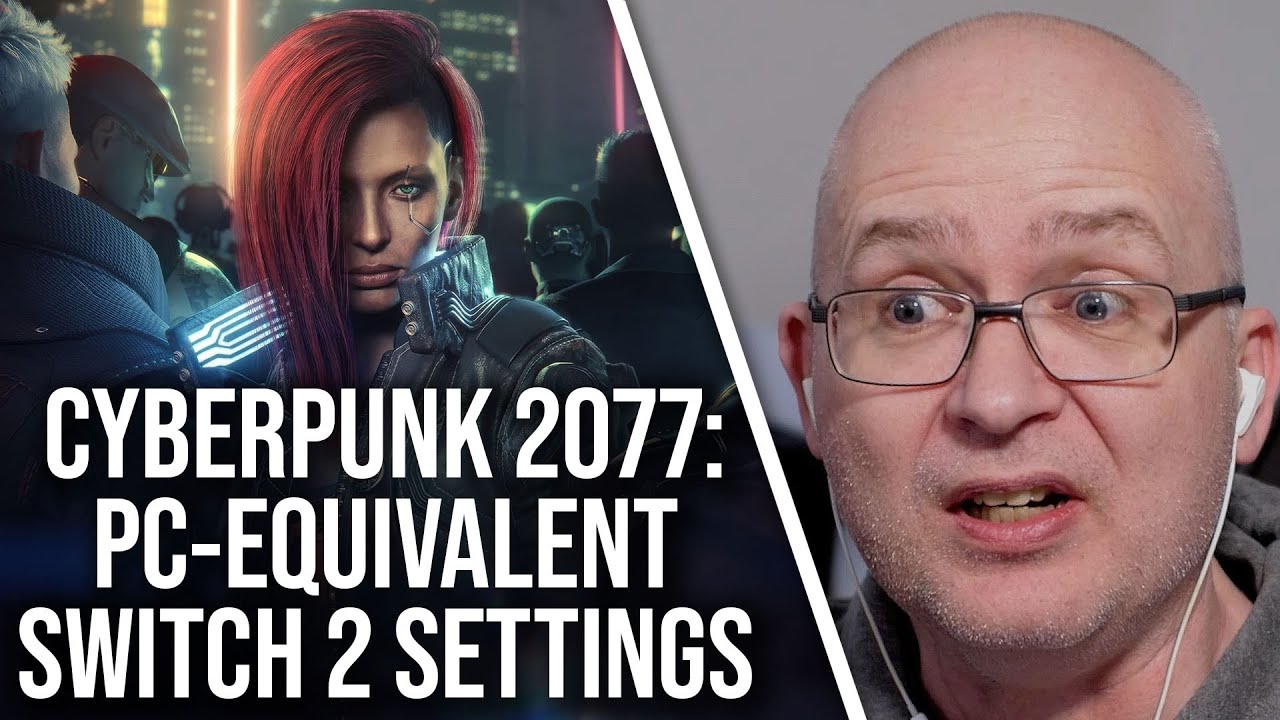The video compares Cyberpunk 2077’s graphics on Nintendo Switch 2 to equivalent PC settings, finding that the Switch 2 generally matches PC’s medium quality presets with custom adaptations in shadows, reflections, and level of detail to optimize performance. Despite some simplifications, especially in geometry and streaming, the Switch 2 delivers a visual experience comparable to PlayStation 5’s performance mode, showcasing CD Projekt Red’s effective optimization for the hybrid console.
The video provides an in-depth comparison of Cyberpunk 2077’s graphics settings on the Nintendo Switch 2 against equivalent PC quality presets, primarily focusing on 1080p resolution with DLSS quality mode on PC. Starting with crowd density, the Switch 2’s medium quality mode most closely matches the PC version in both docked and handheld play, showing a noticeable thinning of crowds from higher to lower settings. Contact shadows are enabled on the Switch 2 in both modes, matching a simple on/off toggle on PC. Volumetric fog and cloud resolutions on Switch 2 also align closely with PC’s medium settings, while ambient occlusion shows a split: docked mode approximates PC’s high setting, but handheld performance mode resembles the low preset.
Mirror quality on the Switch 2 is impressive, with docked mode comparable to PC’s high setting, and handheld mode matching PC’s medium when accounting for lower resolution. However, the comparison becomes more complex with custom Switch 2 adaptations in shadow quality, screen space reflections (SSR), and level of detail. For instance, Switch 2’s SSR mostly mirrors PC’s low preset but includes unique reflections absent on PC, indicating extra ray marching techniques. These customizations mean there is no exact one-to-one match for many settings, with low quality being the broadest general approximation.
Shadow settings reveal further complexity. Local shadow mesh quality on Switch 2 aligns with PC’s low preset, while cascaded shadow resolution matches PC’s medium in docked mode and low in handheld. Distant shadow resolution is on par with PC’s high setting in both Switch 2 modes. Cascade shadow range, however, fluctuates between medium and low when compared to PC, with some scenes showing Switch 2 rendering self-shadows differently. Overall, medium is chosen as the closest PC equivalent, though the video acknowledges the difficulty in finding perfect matches.
Geometry and level of detail on Switch 2 show significant simplification compared to PC’s low settings, with some areas even less detailed than the base PlayStation 4 version. This is likely a strategic choice by CD Projekt Red to optimize performance, especially in less noticeable areas. Interestingly, changing PC’s level of detail presets has minimal impact, while Switch 2 clearly outperforms PS4 in geometry, textures, and shadows during streaming tests, despite running on older hardware. These streaming tests highlight the challenges CD Projekt Red tackled for last-gen consoles, which persist across versions.
Finally, the video summarizes overall settings comparisons between Switch 2 in docked quality and handheld performance modes, alongside PlayStation 5’s performance mode. Some settings on PS5, like ambient occlusion and volumetric fog resolution, are lower than Switch 2’s, likely compensated by PS5’s higher resolution. This comparison underscores that Switch 2 required adaptations beyond simple resolution cuts but avoided a drastically stripped-down experience. In terms of rendering and streaming, Switch 2 performs in the same general ballpark as PS5, demonstrating CD Projekt Red’s successful optimization for the hybrid console.
